Mercedes EQE SUV vs Volvo XC90 – Performance, range & efficiency compared
Both models have their strengths – but which one suits you more?
Compare performance, efficiency, price and space directly: Mercedes EQE SUV or Volvo XC90?
Costs and Efficiency:
Looking at overall running costs, both models reveal some interesting differences in everyday economy.
Volvo XC90 has a barely noticeable advantage in terms of price – it starts at 69800 £, while the Mercedes EQE SUV costs 71600 £. That’s a price difference of around 1791 £.
As for range, the Mercedes EQE SUV performs significantly better – achieving up to 611 km, about 540 km more than the Volvo XC90.
Engine and Performance:
Under the bonnet, it becomes clear which model is tuned for sportiness and which one takes the lead when you hit the accelerator.
When it comes to engine power, the Mercedes EQE SUV has a noticeable edge – offering 625 HP compared to 455 HP. That’s roughly 170 HP more horsepower.
In acceleration from 0 to 100 km/h, the Mercedes EQE SUV is clearly quicker – completing the sprint in 3.70 s, while the Volvo XC90 takes 5.40 s. That’s about 1.70 s faster.
In terms of top speed, the Mercedes EQE SUV performs distinct better – reaching 240 km/h, while the Volvo XC90 tops out at 180 km/h. The difference is around 60 km/h.
There’s also a difference in torque: Mercedes EQE SUV pulls noticeable stronger with 950 Nm compared to 709 Nm. That’s about 241 Nm difference.
Space and Everyday Use:
Beyond pure performance, interior space and usability matter most in daily life. This is where you see which car is more practical and versatile.
Seats: Volvo XC90 offers noticeable more seating capacity – 7 vs 5.
In curb weight, Volvo XC90 is a bit lighter – 2080 kg compared to 2440 kg. The difference is around 360 kg.
In terms of boot space, the Mercedes EQE SUV offers significantly more room – 520 L compared to 302 L. That’s a difference of about 218 L.
In maximum load capacity, the Volvo XC90 performs slight better – up to 1856 L, which is about 181 L more than the Mercedes EQE SUV.
When it comes to payload, Volvo XC90 somewhat takes the win – 710 kg compared to 580 kg. That’s a difference of about 130 kg.
Who comes out on top?
Overall, the Mercedes EQE SUV shows itself to be dominates this comparison and secures the title of DriveDuel Champion.
It convinces with the more balanced overall package and proves to be the more versatile choice for everyday use.
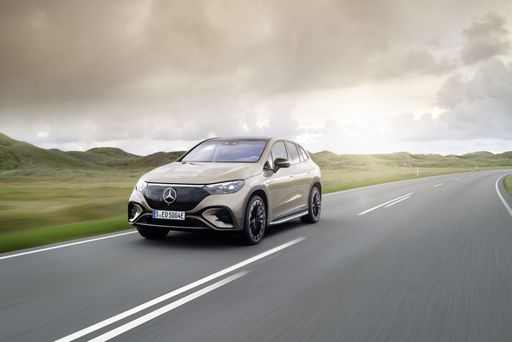
Mercedes EQE SUV
Mercedes EQE SUV
The Mercedes-Benz EQE SUV represents a fusion of advanced electric mobility and luxurious design, offering a refined driving experience that aligns with the brand's renowned legacy. Inside, the cabin is adorned with high-quality materials and state-of-the-art technology, providing both comfort and functionality for modern drivers. Its dynamic exterior is crafted to enhance aerodynamics while maintaining a distinctive and elegant presence on the road.
details @ group-media.mercedes-benz.com
@ group-media.mercedes-benz.com
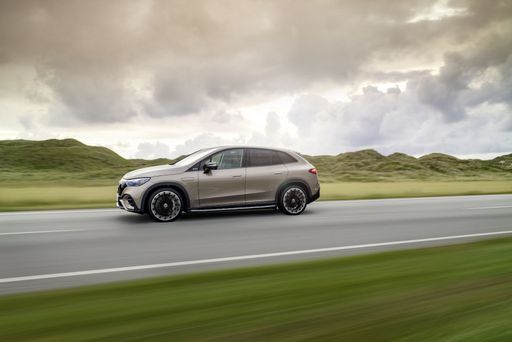 @ group-media.mercedes-benz.com
@ group-media.mercedes-benz.com
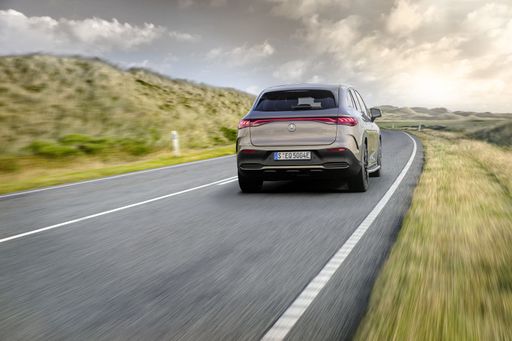 @ group-media.mercedes-benz.com
@ group-media.mercedes-benz.com
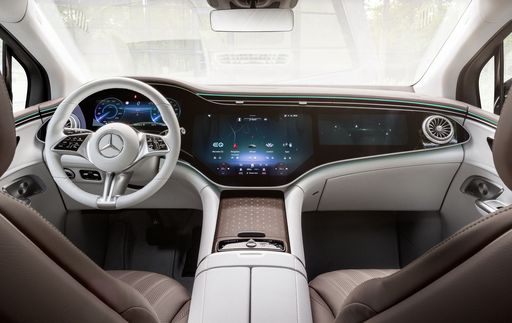 @ group-media.mercedes-benz.com
@ group-media.mercedes-benz.com
Volvo XC90
The Volvo XC90 stands out with its elegant Scandinavian design, seamlessly blending luxury with versatility. Inside, it offers a spacious and meticulously crafted interior, showcasing high-quality materials and advanced technology. The vehicle provides a comfortable and smooth driving experience, making it a popular choice for families and long journeys.
details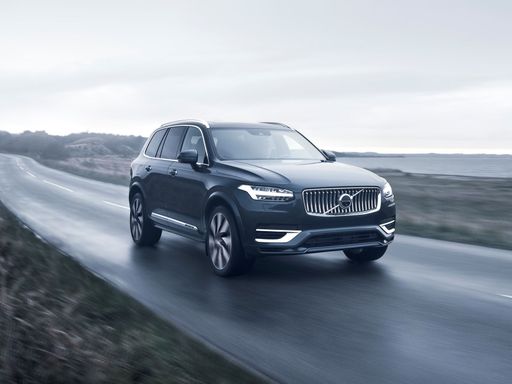 @ media.volvocars.com
@ media.volvocars.com
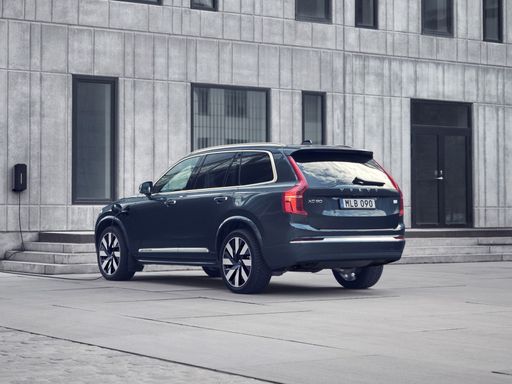 @ media.volvocars.com
@ media.volvocars.com
 @ media.volvocars.com
@ media.volvocars.com
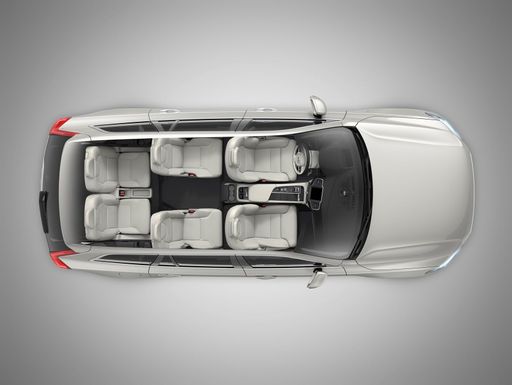 @ media.volvocars.com
@ media.volvocars.com
 @ media.volvocars.com
@ media.volvocars.com

|

|
|
|
|
Costs and Consumption |
|
|---|---|
|
Price
71600 - 125100 £
|
Price
69800 - 84600 £
|
|
Consumption L/100km
-
|
Consumption L/100km
3.5 - 8.5 L
|
|
Consumption kWh/100km
18.3 - 23.1 kWh
|
Consumption kWh/100km
-
|
|
Electric Range
453 - 611 km
|
Electric Range
71 km
|
|
Battery Capacity
90.5 - 96 kWh
|
Battery Capacity
14.70 kWh
|
|
co2
0 g/km
|
co2
79 - 191 g/km
|
|
Fuel tank capacity
-
|
Fuel tank capacity
71 L
|
Dimensions and Body |
|
|---|---|
|
Body Type
SUV
|
Body Type
SUV
|
|
Seats
5
|
Seats
7
|
|
Doors
4
|
Doors
5
|
|
Curb weight
2440 - 2615 kg
|
Curb weight
2080 - 2297 kg
|
|
Trunk capacity
520 L
|
Trunk capacity
262 - 302 L
|
|
Length
4863 - 4879 mm
|
Length
4953 mm
|
|
Width
1940 mm
|
Width
1923 mm
|
|
Height
1672 - 1685 mm
|
Height
1771 mm
|
|
Max trunk capacity
1675 L
|
Max trunk capacity
1816 - 1856 L
|
|
Payload
505 - 580 kg
|
Payload
653 - 710 kg
|
Engine and Performance |
|
|---|---|
|
Engine Type
Electric
|
Engine Type
Petrol MHEV, Plugin Hybrid
|
|
Transmission
Automatic
|
Transmission
Automatic
|
|
Transmission Detail
Reduction Gearbox
|
Transmission Detail
Automatic Gearbox
|
|
Drive Type
All-Wheel Drive, Rear-Wheel Drive
|
Drive Type
All-Wheel Drive
|
|
Power HP
265 - 625 HP
|
Power HP
250 - 455 HP
|
|
Acceleration 0-100km/h
3.7 - 7.1 s
|
Acceleration 0-100km/h
5.4 - 7.7 s
|
|
Max Speed
210 - 240 km/h
|
Max Speed
180 km/h
|
|
Torque
550 - 950 Nm
|
Torque
360 - 709 Nm
|
|
Number of Cylinders
-
|
Number of Cylinders
4
|
|
Power kW
195 - 460 kW
|
Power kW
184 - 335 kW
|
|
Engine capacity
-
|
Engine capacity
1969 cm3
|
General |
|
|---|---|
|
Model Year
2023 - 2025
|
Model Year
2024 - 2025
|
|
CO2 Efficiency Class
A
|
CO2 Efficiency Class
G, B
|
|
Brand
Mercedes-Benz
|
Brand
Volvo
|
What drive types are available for the Mercedes EQE SUV?
Available configurations include All-Wheel Drive or Rear-Wheel Drive.
The prices and data displayed are estimates based on German list prices and may vary by country. This information is not legally binding.
